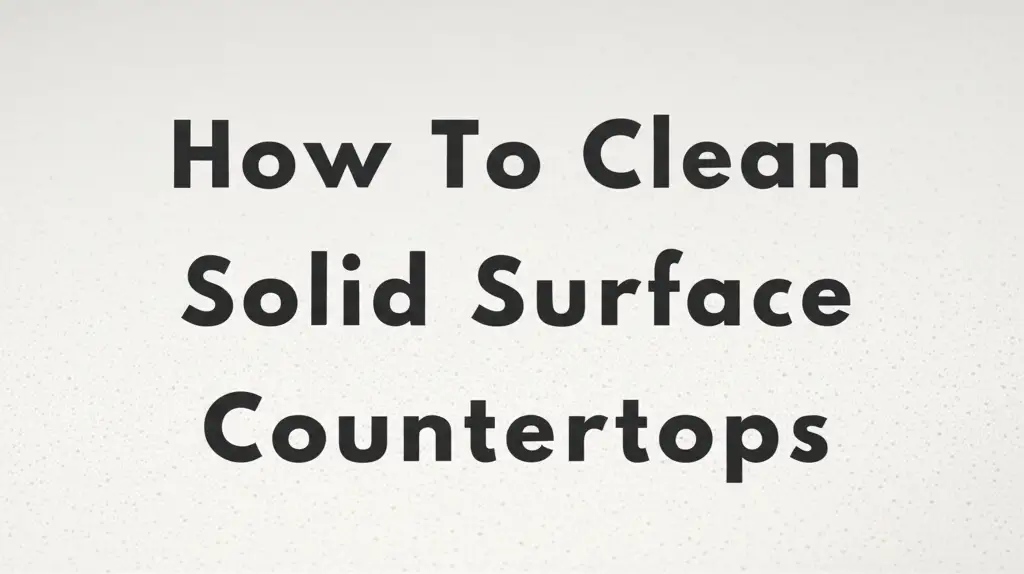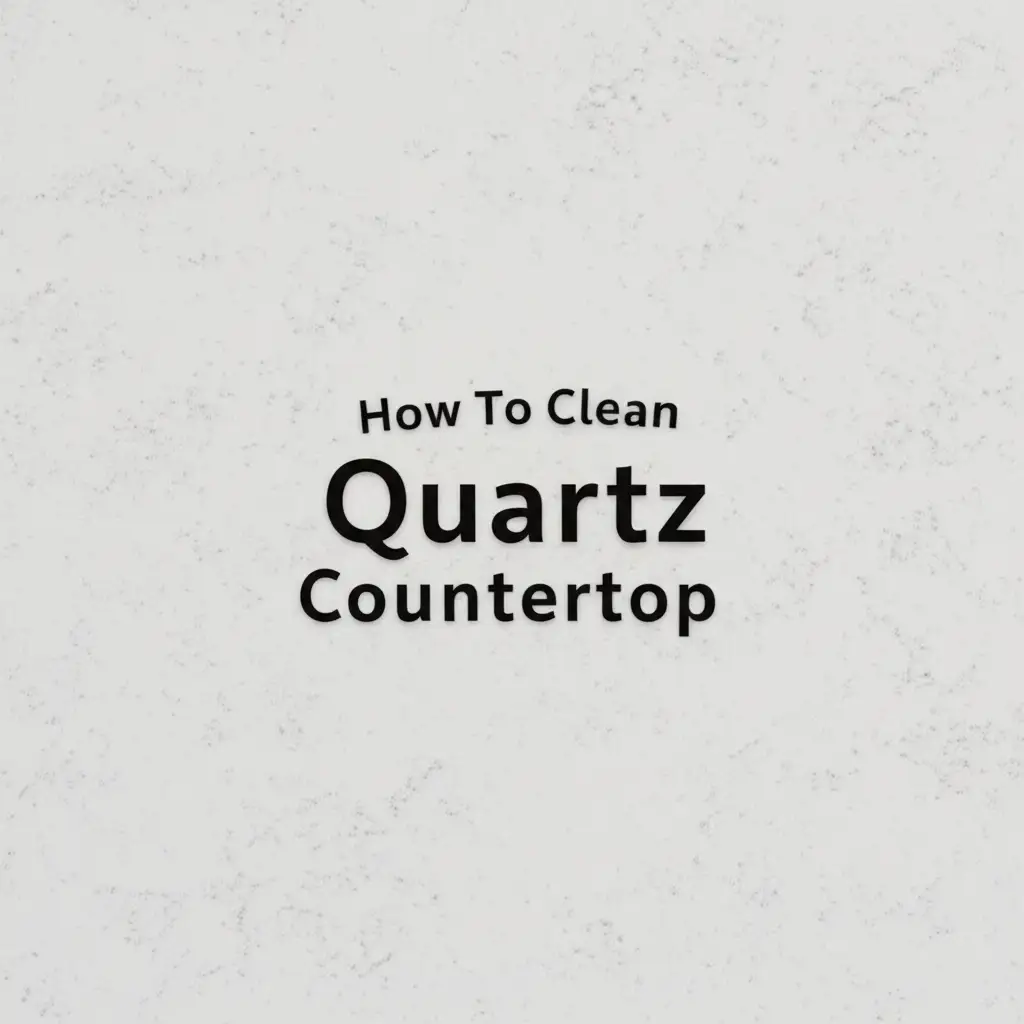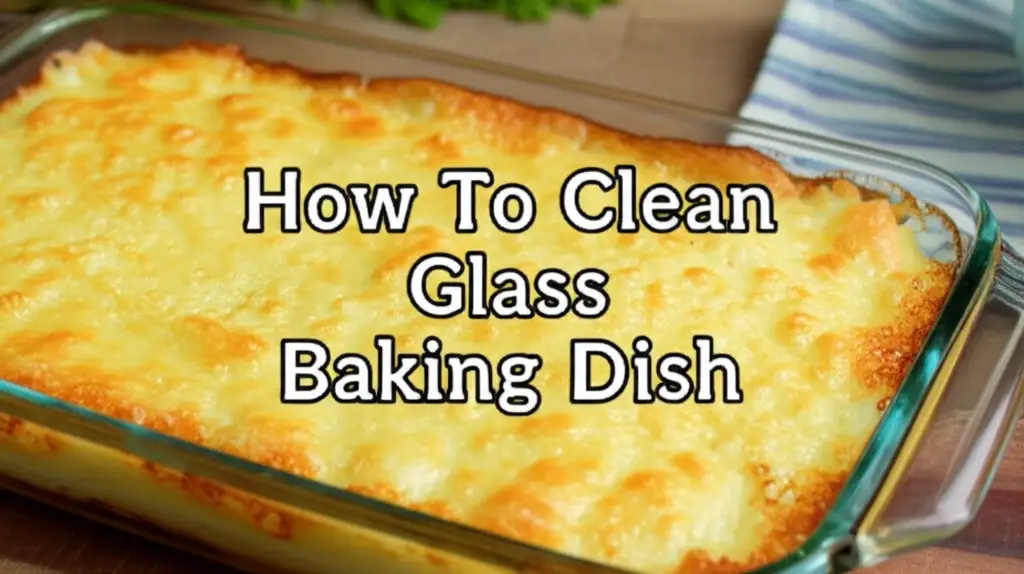· Home Cleaning · 16 min read
How To Clean Tea Stains From Mugs

Your Guide: How To Clean Tea Stains From Mugs
Do you love a good cup of tea but dislike the brown rings it leaves behind? We all do! Stubborn tea stains in mugs can make your favorite cup look dirty, even after washing. These unsightly marks are common, yet they make mugs appear old and unhygienic. I understand the frustration of seeing a beautiful mug marred by these persistent rings.
This article provides a comprehensive guide on how to clean tea stains from mugs. We will explore various effective methods, from simple home remedies to more powerful solutions. You will learn easy steps to restore your mugs to their original pristine condition. We also cover tips to prevent future staining, keeping your cups sparkling clean longer.
Takeaway
- Use baking soda and water for an effective, natural paste.
- Lemon and salt can naturally bleach and scrub away stains.
- For tough stains, consider hydrogen peroxide or denture tablets.
- Always rinse mugs immediately after use to prevent buildup.
- Deep clean mugs regularly to maintain their appearance.
How do you get tea stains out of mugs?
You can get tea stains out of mugs using simple household items. A paste made from baking soda and a little water often works very well. For tougher stains, combine baking soda with vinegar or use a mixture of salt and lemon juice. Commercial cleaners and even denture tablets also offer effective solutions for restoring your mugs.
Understanding Tea Stains: Why Do Mugs Get Stained?
Tea stains are a common problem for many tea lovers. They are usually brown rings that form inside ceramic, porcelain, or even stainless steel mugs. These stains come from tannins, natural compounds found in tea leaves. Tannins give tea its color and some of its flavor.
When hot tea sits in a mug, these tannins bond with the mug’s surface. Over time, especially with repeated use and insufficient cleaning, these bonds become stronger. This leads to the discoloration we see as tea stains. The porous nature of some mug materials, like ceramic, makes them more susceptible to absorbing these compounds. This is why you often see darker stains on your favorite ceramic mug compared to glass. Even if you rinse your mug, a thin layer of residue can remain. This layer builds up with each new cup of tea. It creates a dark, noticeable ring over time. Knowing what causes these stains helps us understand how to remove them effectively. It also guides us in preventing them from forming in the first place.
The type of tea can also influence the severity of the stain. Darker teas like black tea or certain herbal blends tend to leave more prominent stains than lighter teas. The longer the tea sits in the mug, the deeper the tannins can penetrate the surface. This makes the stain harder to remove with just a regular wash. I have noticed this difference myself with my morning black tea versus green tea. Proper and timely cleaning is key to keeping your mugs looking new.
Everyday Cleaning: Dish Soap and Sponge Method
Sometimes, tea stains are not too old or deeply set. For these lighter stains, your regular dish soap and a sponge can do the job. This method is the first line of defense against fresh tea stains. It is important to address stains quickly before they become embedded.
Start by rinsing your mug with warm water immediately after you finish your tea. This helps to loosen any fresh residue. Then, apply a few drops of dish soap to a damp sponge or a soft brush. Gently scrub the inside of the mug, focusing on the stained areas. Use a circular motion to dislodge the tea particles. The friction from the sponge combined with the cleaning power of the dish soap can often lift light stains effectively. Rinse the mug thoroughly with warm water afterwards. Check if the stain is gone. If the stain remains, it means it is more stubborn. You will need a more powerful cleaning agent.
For best results, use an abrasive sponge or a non-scratch scrubber. These can provide more scrubbing power without damaging the mug’s surface. Avoid using steel wool on delicate materials like porcelain or ceramic, as it can cause scratches. This simple daily practice can go a long way in preventing tea stains from building up. I always make sure to give my mugs a quick scrub right after use. This keeps them looking fresh. If you are dealing with other types of stains on metal, you might find tips on how to clean stains on stainless steel helpful for different surfaces. Regular washing is the best way to maintain cleanliness for all your kitchenware.
Powerful Home Remedies: Baking Soda for Tea Stains
Baking soda is a miracle cleaner for many household problems, including tea stains. It is mildly abrasive and also acts as a natural deodorizer and whitener. This makes it a safe and effective option for cleaning your mugs. You likely already have it in your pantry, making it a convenient solution.
Baking Soda and Water Paste
This is one of the easiest and most effective methods to clean tea stains from mugs. It works by gently scrubbing away the stain without harsh chemicals.
- Materials: Baking soda, a small amount of water, and a non-abrasive sponge or cloth.
- Steps:
- Wet the inside of your mug slightly.
- Sprinkle about one tablespoon of baking soda into the mug.
- Add just enough water to create a thick paste. The paste should be consistent, not too watery.
- Using your sponge or cloth, vigorously scrub the stained areas with the paste. The mild abrasive nature of the baking soda will help lift the stain.
- Allow the paste to sit for a few minutes on very stubborn stains. This gives the baking soda time to work its magic.
- Rinse the mug thoroughly with warm water.
- Repeat if necessary until the stain is gone.
This method works wonders for most common tea stains. I find it very satisfying to see the brown rings disappear with just a bit of elbow grease.
Baking Soda and Vinegar Combo
For extremely stubborn tea stains, combining baking soda with white vinegar can provide extra power. The chemical reaction between baking soda (a base) and vinegar (an acid) creates fizzing action. This fizzing helps to loosen tough stains.
- Materials: Baking soda, white vinegar, and a mug.
- Steps:
- Sprinkle one to two tablespoons of baking soda into the stained mug.
- Pour a small amount of white vinegar over the baking soda. It will immediately begin to fizz.
- Allow the mixture to fizz and sit for a few minutes. You will see bubbles forming as the reaction occurs.
- After the fizzing subsides, use a sponge or brush to scrub the remaining stain. The loosened particles should come off easily.
- Rinse the mug thoroughly with warm water.
Be careful not to add too much vinegar at once, as the fizzing can overflow the mug. This combination is particularly useful for set-in stains that resist simpler methods. I have used this trick many times when my mugs looked beyond repair. If you have similar stains on other items, such as how to clean tea stains from stainless steel, some of these principles might also apply.
Tackling Tough Stains: Using Salt and Lemon
When baking soda alone isn’t enough, turning to another natural powerhouse, lemon and salt, can save your mugs. This method combines the natural bleaching properties of lemon juice with the abrasive texture of salt. Together, they create a potent and natural scrub for stubborn tea stains. This pair is effective and leaves a fresh, clean scent.
Lemon Juice and Salt Scrub
This method is perfect for those deep, dark tea rings that seem impossible to remove. The citric acid in lemon acts as a mild bleach, breaking down the stain, while salt provides the necessary scrubbing power.
- Materials: Half a lemon, a few teaspoons of coarse salt (table salt works too, but coarse salt provides more abrasion).
- Steps:
- Cut a lemon in half.
- Sprinkle a generous amount of salt onto the stained area inside the mug. You want a good layer covering the stain.
- Take one half of the lemon and use it to scrub the salt around the inside of the mug. Squeeze the lemon slightly as you scrub to release its juice. The combination of the salt’s abrasion and the lemon’s acidity works to lift the stain.
- Continue scrubbing for a few minutes, focusing on the darkest areas.
- Let the lemon and salt mixture sit in the mug for 10-15 minutes if the stains are very tough. This allows the lemon juice to penetrate the stain.
- Rinse the mug thoroughly with warm water. The stains should be noticeably lighter or completely gone.
I love this method because it is all-natural and leaves my mugs smelling fresh. It is surprisingly effective on old, set-in stains. Plus, you get to use a natural product instead of harsh chemicals. This approach is great for general cleaning around the house. Consider similar natural methods for other items like how to clean silver-plated tea set if you want to extend your natural cleaning regimen.
Chemical Solutions: Bleach and Denture Tablets
For the most persistent tea stains that resist natural remedies, chemical solutions can be a last resort. While I prefer natural methods, sometimes stronger agents are necessary. Bleach and denture tablets are both highly effective at whitening and removing tough discoloration. Always use these with caution and follow safety guidelines.
Using Bleach for Deep Stains
Bleach is a powerful oxidizing agent that can break down and whiten organic stains like those from tea. It is very effective but must be used carefully. Only use bleach on ceramic, porcelain, or glass mugs. Never use it on stainless steel or colored mugs, as it can cause damage or discoloration.
- Materials: Household bleach, water, rubber gloves, and a well-ventilated area.
- Steps:
- Put on rubber gloves to protect your hands. Work in a well-ventilated area to avoid inhaling fumes.
- Fill the stained mug with water.
- Add a small amount of bleach to the water. A teaspoon or two is usually sufficient for a standard mug. Do not use too much bleach, as a stronger concentration is not necessarily better and can be more hazardous.
- Let the mug sit for a few minutes, or up to an hour for very stubborn stains. Watch the mug as the stain begins to fade.
- Pour out the bleach solution.
- Thoroughly wash the mug with dish soap and rinse several times. Ensure no bleach residue remains before using the mug again.
I use this method only for the toughest stains when nothing else works. It is important to rinse very well. I always wash the mug twice with soap and hot water after bleaching.
Denture Tablets for an Easy Clean
Denture cleaning tablets are a surprising but incredibly effective solution for tea stains. These tablets contain gentle bleaching agents and effervescent compounds. They bubble and dissolve stains without scrubbing. This makes them a very convenient option, especially for multiple stained mugs.
- Materials: Denture cleaning tablets, warm water, and your stained mugs.
- Steps:
- Place one denture tablet into each stained mug.
- Fill the mug with warm water. The tablet will begin to fizz immediately.
- Let the mug sit overnight, or for a few hours. The fizzing action and cleaning agents will work to lift the stains.
- In the morning, pour out the solution.
- Rinse the mug thoroughly with warm water and wash with dish soap. The stains should be gone or significantly faded.
This method is my personal favorite for its ease and effectiveness. It requires almost no effort. It works on coffee stains too! If you are dealing with other types of metal stains, for example, how to clean hard water stains from stainless steel sink, some of these chemical principles might be transferable to other materials. Always check the material compatibility of any cleaning agent.
Specialized Cleaners: Commercial Mug Stain Removers
Sometimes, home remedies are not enough, or you might prefer a product specifically designed for the task. Commercial mug stain removers are available in various forms, such as powders, liquids, or specialized sponges. These products are formulated to break down tough tea and coffee stains effectively. They offer a convenient solution for persistent discoloration.
When choosing a commercial cleaner, look for products that are safe for your mug’s material. Most are safe for ceramic and porcelain. Always read the product label and instructions carefully before use. This ensures both effectiveness and safety.
Types of Commercial Mug Cleaners
- Powdered Cleaners: These usually contain oxygen-based bleaching agents that activate with water. You typically add a scoop to the mug, fill with hot water, and let it soak. The active oxygen works to break down the tannins without harsh scrubbing. They are often very effective and leave mugs sparkling.
- Liquid Cleaners: Some brands offer liquid solutions that you apply directly or dilute with water. These can be good for spot treatment or for soaking multiple mugs. They often contain mild acids or enzymes designed to dissolve organic stains.
- Specialized Sponges or Erasers: Products like “magic erasers” (melamine foam) can also remove superficial tea stains. They work by acting as a very fine abrasive. You simply wet the sponge and rub the stained area. While not a chemical cleaner, these are commercial products and offer a different approach to physical stain removal.
How to Use Commercial Cleaners Safely
- Read Instructions: Every product is different. Follow the manufacturer’s specific instructions for dilution, application, and soak time.
- Ventilation: Some chemical cleaners may produce fumes. Use them in a well-ventilated area, or outdoors if possible.
- Gloves: Wear protective gloves to prevent skin irritation.
- Rinsing: Always rinse your mugs thoroughly multiple times after using a commercial cleaner. Ensure no chemical residue remains before using the mug for beverages.
- Material Compatibility: Double-check that the cleaner is safe for your mug’s material. Some strong chemicals can damage delicate glazes or patterns. Avoid harsh abrasives on easily scratched surfaces.
I have found commercial powders to be very convenient when I have several mugs to clean. They require minimal effort and yield great results. Just remember that safety comes first when dealing with any cleaning chemicals.
Preventing Future Tea Stains: Tips and Tricks
The best way to deal with tea stains is to prevent them from forming in the first place. A little proactive effort can save you a lot of scrubbing later. Establishing good habits can keep your mugs looking new for a long time. These simple tips are easy to incorporate into your daily routine.
- Rinse Immediately After Use: This is the most crucial step. As soon as you finish your tea, rinse your mug with warm water. This washes away most of the tannins before they have a chance to settle and bond with the mug’s surface. A quick rinse can prevent 90% of future stains.
- Wash Mugs Promptly: Don’t let used mugs sit in the sink for hours or days. The longer tea residue sits, the harder it is to remove. Wash your mugs with dish soap and water shortly after use, or put them directly into the dishwasher.
- Use a Sponge with a Scrubber Side: When handwashing, use a sponge that has a mildly abrasive scrubber side. Give the inside of your mug a quick scrub even if it looks clean. This helps remove any microscopic film that might be starting to build up.
- Deep Clean Regularly: Even with daily rinsing, some residue might accumulate over time. Schedule a deeper clean for your mugs every week or two. Use baking soda, lemon and salt, or another preferred method to keep them pristine. Regular maintenance prevents stains from becoming truly set in.
- Consider Mug Material: Some mug materials are more resistant to staining. Glass and high-quality glazed porcelain are less porous than some ceramics. This makes them less likely to absorb tannins. While you might not replace all your mugs, keep this in mind for future purchases.
- Avoid Letting Tea Sit: Do not leave tea in mugs for extended periods. If you brew a large pot, pour only what you intend to drink immediately. Transfer leftovers to a clean, lidded container. This reduces the contact time between the tea and the mug surface.
- Wipe Down Tea Bags/Infusers: Sometimes, the rim of the mug gets stained from dripping tea bags or infusers. A quick wipe with a damp cloth after removing the tea bag can prevent these unsightly drips from drying and staining.
By following these simple preventative measures, you can significantly reduce the occurrence of tea stains. This means less scrubbing and more enjoyment of your perfectly clean mugs. I always make sure to rinse my mug right after finishing my tea. This has made a huge difference in keeping my mugs spotless.
FAQ Section
Are tea stains permanent?
No, tea stains are rarely permanent. They are caused by tannins that bond to the mug’s surface. While they can be stubborn, nearly all tea stains can be removed with proper cleaning methods. It may require a stronger cleaning agent or more scrubbing for older stains.
Can I use lemon juice alone to remove tea stains?
Lemon juice alone can help with very light, fresh tea stains due to its mild acidity. For more set-in stains, it is much more effective when combined with an abrasive like salt or baking soda. The scrubbing action helps physically lift the stain as the lemon works.
Does hydrogen peroxide work on tea stains?
Yes, hydrogen peroxide is effective at removing tea stains. It is a mild bleaching agent that breaks down organic compounds. You can pour a small amount into the mug, let it sit for 15-30 minutes, then rinse. It is a gentler alternative to chlorine bleach for whitening.
How often should I deep clean my mugs?
The frequency depends on how often you use them and how well you rinse them daily. For daily tea drinkers, deep cleaning mugs once a week or every two weeks is a good practice. This prevents stubborn buildup and keeps your mugs looking fresh.
Is bleach safe for all types of mugs?
Bleach is safe for most ceramic, porcelain, and glass mugs. However, you should avoid using it on stainless steel mugs, as it can cause pitting or discoloration. Also, be careful with mugs that have delicate glazes, hand-painted designs, or metallic accents, as bleach can damage them.
Can these methods also remove coffee stains?
Yes, most of the methods described for tea stains are also highly effective for coffee stains. Coffee stains are caused by similar organic compounds. Baking soda, lemon and salt, denture tablets, and even bleach work well to remove coffee discoloration from mugs.
Conclusion
Tackling tea stains on mugs might seem like a small task, but it makes a big difference. Nobody likes drinking from a mug with unsightly brown rings. I have walked you through various effective ways to clean tea stains from mugs, from simple dish soap scrubs to powerful natural remedies and chemical solutions. You now have a comprehensive toolkit to restore your favorite cups.
Remember, prevention is key. A quick rinse after each use and prompt washing can save you from a lot of scrubbing later. Regular deep cleaning with methods like baking soda or lemon and salt will keep your mugs sparkling. So, go ahead, reclaim your mugs from those stubborn tea stains. Enjoy your next cup of tea in a perfectly clean, pristine mug. Your mugs will thank you for it! Keep them clean, and they will serve you well for years to come.
- tea stains
- clean mugs
- stain removal
- kitchen cleaning
- baking soda cleaning
- mug cleaning tips




